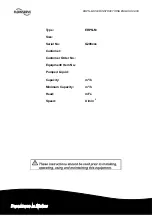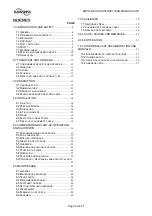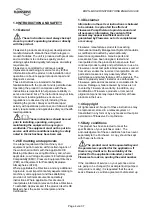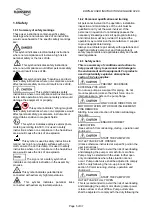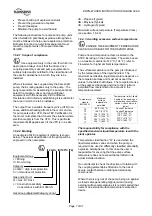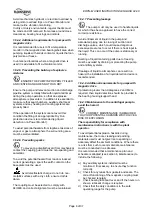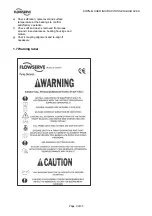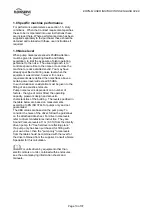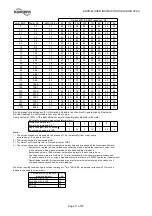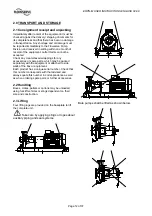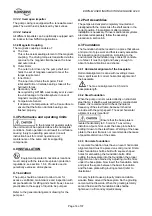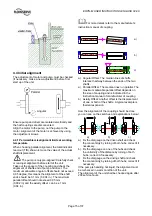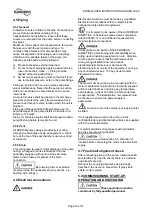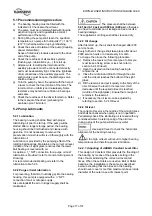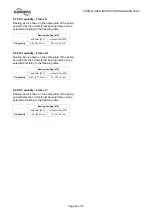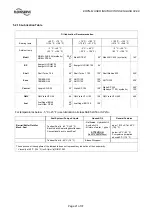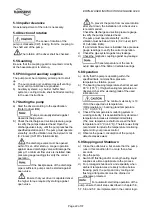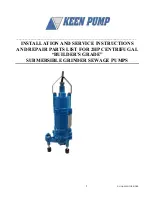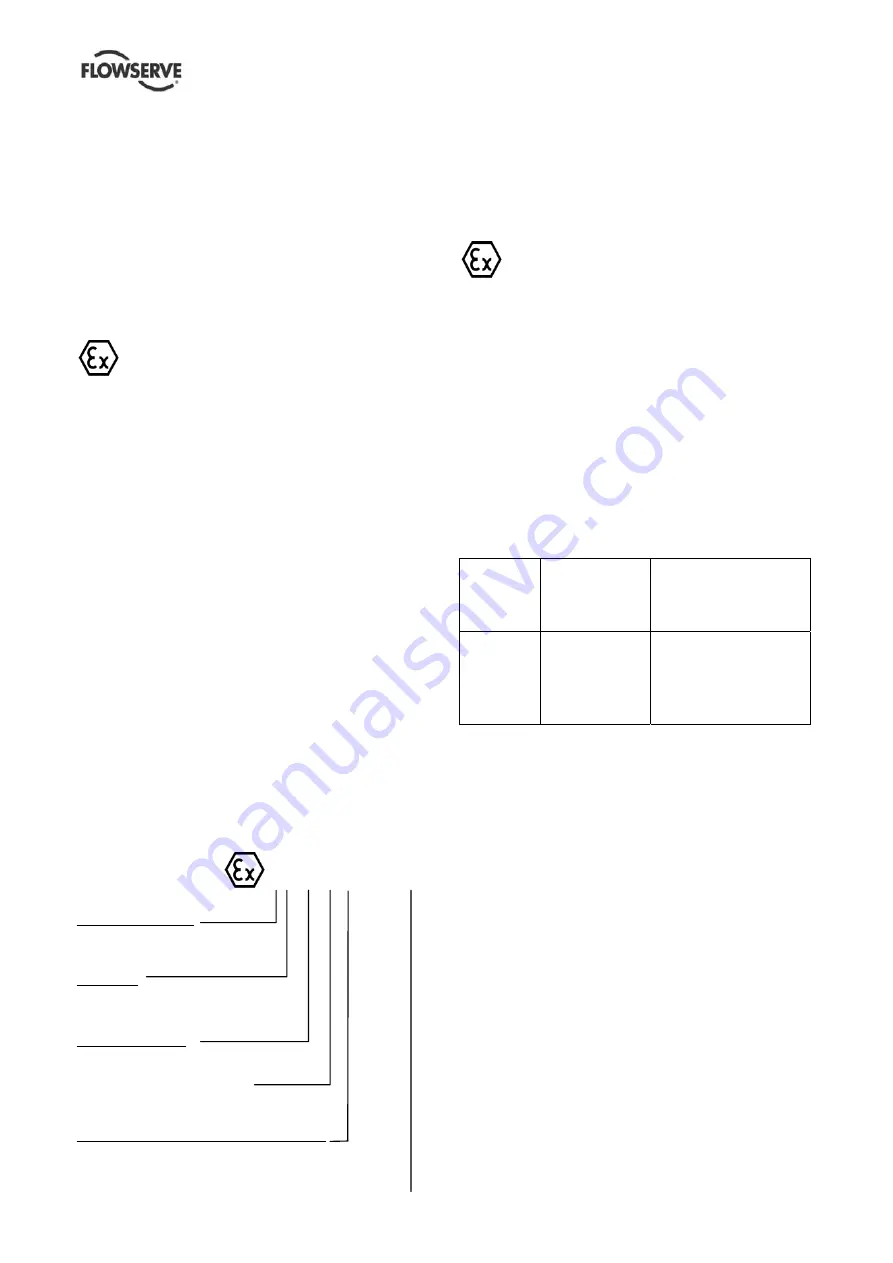
ERPN-M USER INSTRUCTIONS ENGLISH 02-08
Page 7 of 37
•
Prevent build up of explosive mixtures
•
Prevent the generation of sparks
•
Prevent
leakages
•
Maintain the pump to avoid hazard
The following instructions for pumps and pump units
when installed in potentially explosive atmospheres
must be followed to help ensure explosion protection.
Both electrical and non-electrical equipment must
meet the requirements of European Directive
94/9/EC.
1.6.4.1 Scope of compliance
Use equipment only in the zone for which it is
appropriate. Always check that the driver, drive
coupling assembly, seal and pump equipment are
suitably rated and/or certified for the classification of
the specific atmosphere in which they are to be
installed.
Where Flowserve has supplied only the bare shaft
pump, the Ex rating applies only to the pump. The
party responsible for assembling the pump set shall
select the coupling, driver and any additional
equipment, with the necessary CE Certificate/
Declaration of Conformity establishing it is suitable for
the area in which it is to be installed.
The output from a variable frequency drive (VFD) can
cause additional heating affects in the motor and so,
for pump sets with a VFD, the ATEX Certification for
the motor must state that it covers the situation where
electrical supply is from the VFD. This is particular
requirement still applies even if the VFD is in a safe
area.
1.6.4.2 Marking
An example of ATEX equipment marking is shown
below. The actual classification of the pump will be
engraved on the nameplate.
II 2 GD c IIC135ºC (T4)
Equipment Group
I = Mining
II = Non-mining
Category
2 or M2 = High level protection
3 = normal level of protection
Gas and/or Dust
G = Gas; D= Dust
c = Constructional safety
(in accordance with En13463-5)
Gas Group (
Equipment Category 2 only
)
IIA – Propane (Typical)
IIB – Ethylene (Typical)
IIC – Hydrogen (Typical)
Maximum surface temperature (Temperature Class)
(see section 1.6.4.3)
1.6.4.3 Avoiding excessive surface temperatures
ENSURE THE EQUIPMENT TEMPERATURE
CLASS IS SUITABLE FOR THE HAZARD ZONE
Pumps have a temperature class as stated in the
ATEX Ex rating on the nameplate. These are based
on a maximum ambient of 40 °C (104 °F); refer to
Flowserve for higher ambient temperatures.
The surface temperature on the pump is influenced
by the temperature of the liquid handled. The
maximum permissible liquid temperature depends on
the temperature class and must not exceed the
values in the table that follows. The temperature rise
at the seals and bearings and due to the minimum
permitted flow rate is taken into account in the
temperatures stated.
Temperature
class to
EN 13463-1
Maximum
surface
temperature
permitted
Temperature limit of liquid
handled (* depending on
material and construction
variant - check which is
lower)
T6
T5
T4
T3
T2
T1
85 °C (185 °F)
100 °C(212 °F)
135 °C (275 °F)
200 °C (392 °F)
300 °C (572 °F)
450 °C (842 °F)
Consult Flowserve
Consult Flowserve
110 °C (230 °F) *
175 °C (347 °F) *
270 °C (518 °F) *
350 °C (662 °F) *
The responsibility for compliance with the
specified maximum liquid temperature is with the
plant operator.
Temperature classification “Tx” is used when the
liquid temperature varies and when the pump is
required to be used in differently classified potentially
explosive
atmospheres. In this case the user is
responsible for ensuring that the pump surface
temperature does not exceed that permitted in its
actual installed location.
Do not attempt to check the direction of rotation with
the coupling element/pins fitted due to the risk of
severe contact between rotating and stationary
components.
Where there is any risk of the pump being run against
a closed valve generating high liquid and casing
external surface temperatures it is recommended that
users fit an external surface temperature protection
device.


